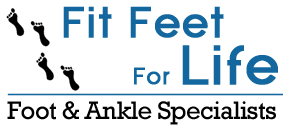Our Bunion and Hammertoe Doctors located in Sun City Center & St Petersburg, FL can help with your Bunions & Hammertoes treatment
BUNIONS
Bunions are one of the most common foot disorders treated by Dr. Sanchez. In fact, bunions are one of the most common disorders treated by most podiatrists across the country. More than half the women in America have bunions, a common deformity often blamed on wearing tight, narrow shoes. Bunions cause the base of your big toe (Metatarsophalangeal Joint) to enlarge and protrude. The skin over it may be red and tender. This can be acquired through time or it can be congenital (you got it from your family).
Wearing any type of shoe may be painful when you have a bunion. The joint involved flexes with every step you take. The bigger your bunion gets, the more it hurts to walk. Bursitis (inflammation) may also set in. Your big toe may angle towards your second toe, or even move all the way under or over it. The skin on the bottom of your foot may also become thicker and painful.
Pressure from your big toe may force your second toe out of alignment, sometimes causing it to overlap your third toe. If your bunion gets too severe, it may cause difficulty in walking. Your pain may become chronic and you may develop arthritis.
Most bunions can be treated conservatively with wider & softer shoes, pads to relieve the pressure and/or medications. If this does not help then surgical treatment is indicated.
Bunion surgery, or bunionectomy, realigns the bone, ligaments, tendons and nerves so your big toe can be brought back to its correct position and the bump on the inside of the joint removed. Many bunion surgeries are performed on a same-day basis (no hospital stays) using a local anesthesia. During your recovery it is common to have pain and swelling. This swelling and stiffness may be persistent for several months.
HAMMERTOES
A Hammertoe is a deformity of the second, third or fourth toes. In this condition, the toe is bent at the middle joint, resembling a hammer. Left untreated, hammertoes can become inflexible and require surgery. People with hammertoes may have corns or calluses on the top of the middle joint of the toe or on the tip of the toe. They may also feel pain in their toes or feet and have difficulty finding comfortable shoes.
Causes of hammertoe include improperly fitting shoes and muscle imbalance. Treatment for the condition typically involves shoes with soft, roomy toe boxes and toe exercises to stretch and strengthen the muscles. Commercially available straps, cushions or non-medicated corn pads may also relieve symptoms.



